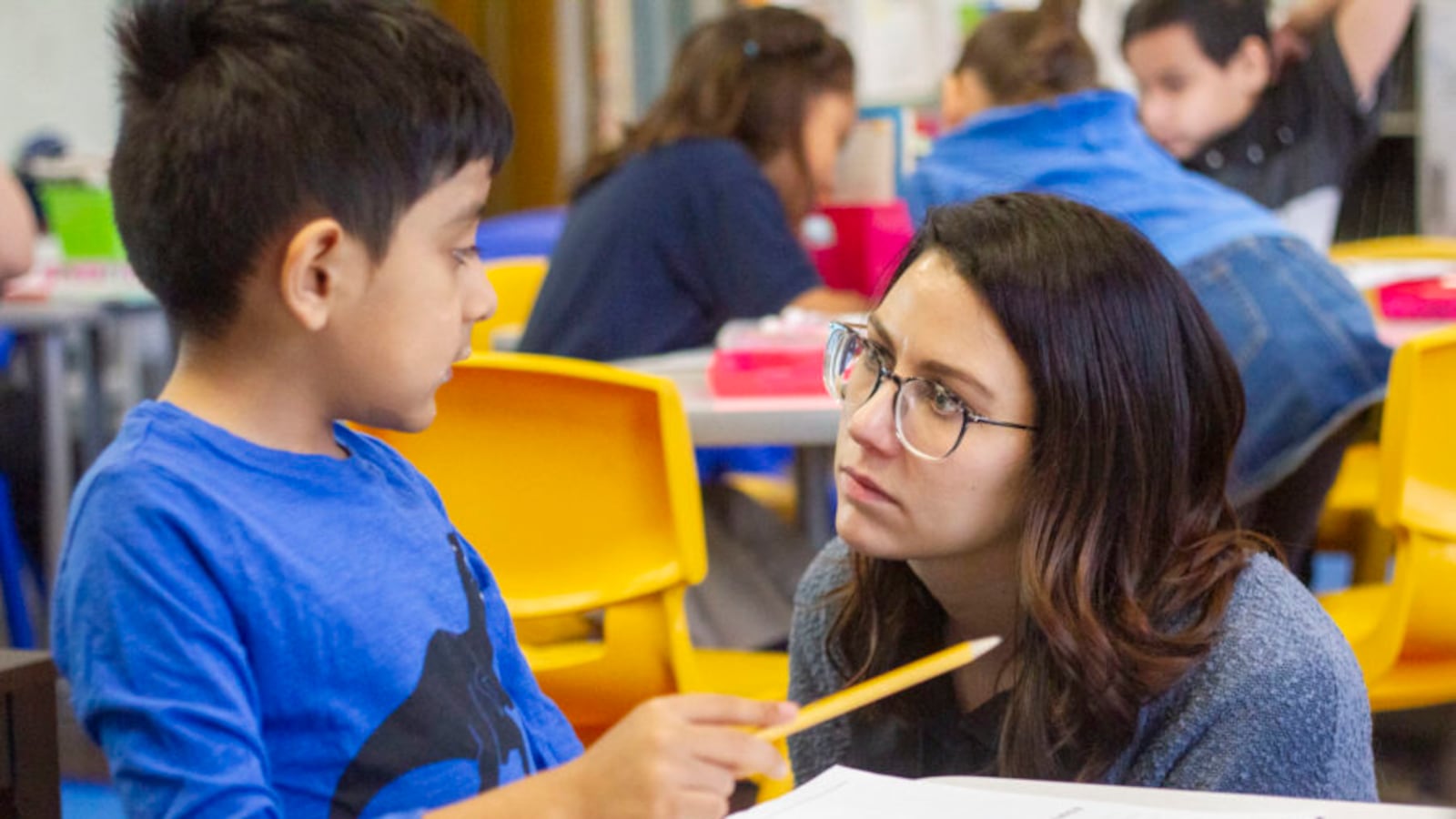Nearly every month, parents, teachers and sometimes aldermen address the Board of Education to sound the alarm about overcrowded classes in Chicago schools. They describe kindergartens with more than 40 students, or children whose asthma attacks have gone unnoticed in packed classrooms.
Now class size limits have become a key issue in contentious contract bargaining. If negotiators do not agree by Monday, more than 25,000 members of the Chicago Teachers Union will strike, possibly joined by school support staff and park district workers.
Related: Chicago is the latest front for ‘common good’ bargaining
The union wants to lower the cap on class sizes to 20 in kindergarten, 24 in first through fifth grade, and 28 for middle and high school. The union also wants to introduce a financial penalty to enforce those limits, in which teachers who teach overcrowded classes would receive $5 a day per student exceeding the class size limit.
The union estimates more than 41,000 elementary students are learning in overcrowded classrooms — nearly 23% of district students.
Teachers say the penalty is key — the district already has guidelines for elementary class sizes, but routinely exceeds them. They hope to win what some striking charter teachers won in Chicago last school year, a cap on class size and compensation, to go to teachers teaching overfull classes.
Chicago’s class size cap is 28 students in kindergarten through fifth grades, and 31 students in middle and high school. If a K-2 class has 32 or more students, the district must provide an additional teacher assistant, a demand won in the last contract. A joint district-union panel reviews classes exceeding the caps and seeks ways to mitigate the crowding.
The district is offering to extend to third grade the commitment to add another aide in overcrowded classrooms, according to a Sep. 27 bargaining document released on the Chicago Public Schools website.
The school district also is planning a larger investment in teacher support staff this school year.
“The district has made significant progress to minimize classroom overcrowding in the vast majority of schools across the city,’’ said Emily Bolton, press officer for Chicago Public Schools. “Our offer makes a $10 million investment to provide 200 staff members to support classrooms experiencing overcrowding.”
In December, the group Parents 4 Teachers analyzed class size data for the 2018-19 school year, comparing every district class to the guidelines in the union contract. They found that 1,007 Chicago classrooms in grades K-8 exceeded the guidelines. Of those, 13 had 40 or more students, including one kindergarten class with 44 children, the report found.
Illinois does not limit class sizes, except for in special education. It is one of just 14 states that don’t regulate class sizes.
Related: Six parent questions — asked and answered — about the growing teacher strike threat
The class size demand overlaps with the issue of staffing, another contentious area in the negotiations. At a board meeting last winter, Norine Gutekanst, organizing coordinator with the Chicago Teachers Union, said that some elementary classes with 39 students at Daniel S. Wentworth Elementary in Englewood had no classroom assistants and others had to wait months for an aide. In response, the district’s Chief Education Officer LaTanya McDade said the district was seeking a second kindergarten teacher for Wentworth.
The union wants the mayor to write promises to add more teachers, nurses and social workers into the contract, to ensure that the hired staff is fully licensed, and to keep the work in house and not contracted out. The mayor and district leadership, in response, have pointed to their promise to hire for hundreds of new school staff in the recent budget.
Parents who have children in overcrowded classrooms, meanwhile, say relief can’t come soon enough.
Valentin Quintero, who spoke at a winter school board meeting, said his 6-year-old kindergartener at Grissom Elementary in South Chicago spent hours every evening trying to learn information that his teacher couldn’t cover during class while overseeing more than 40 students.
Both Quintero and his son put in time trying to master lessons to compensate for overcrowding.
“I can assure you that if all the parents around the neighborhood had time to come here and speak, you’d have 400 parents speaking out,” he said at the time. “This is a safety issue and a health issue.”

